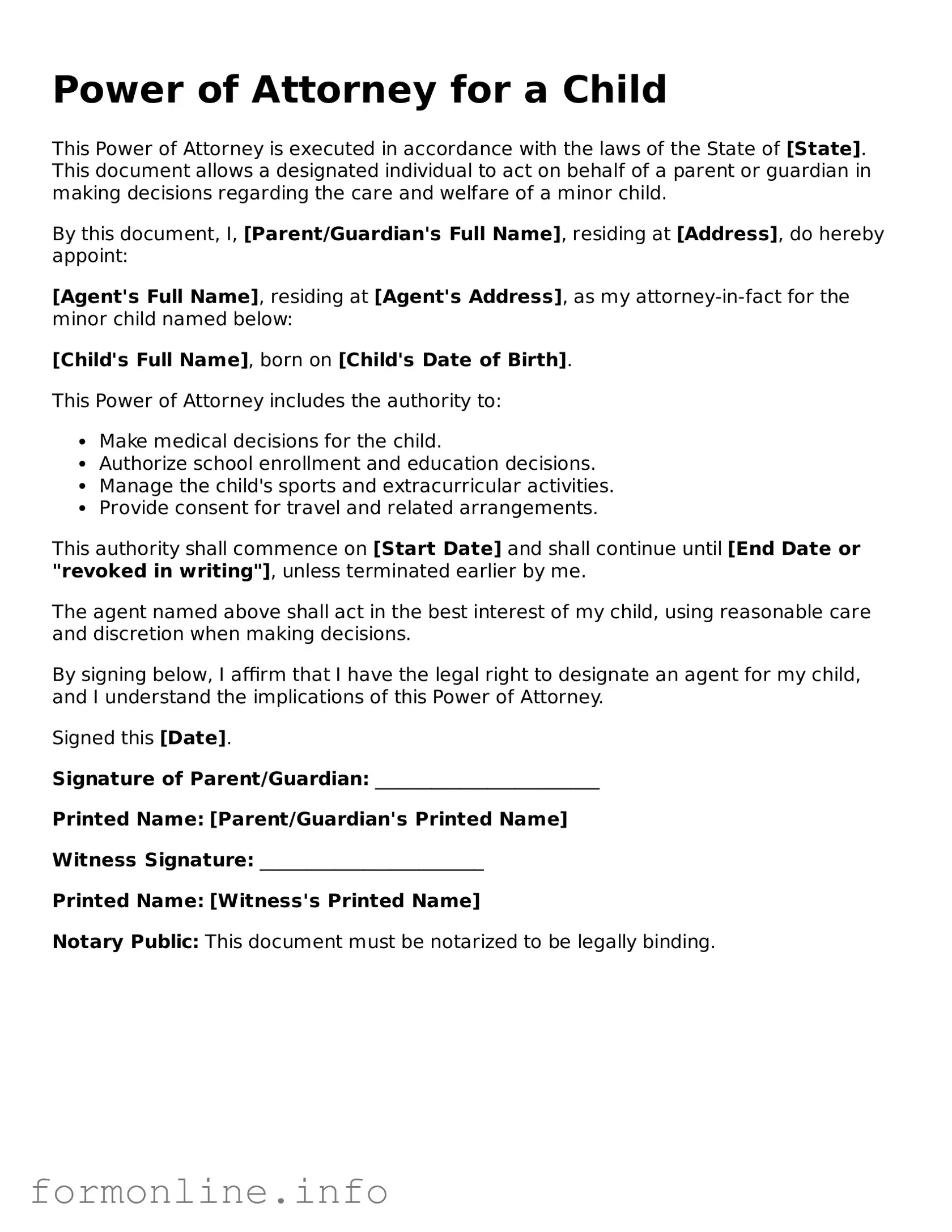Power of Attorney for a Child
This Power of Attorney is executed in accordance with the laws of the State of [State]. This document allows a designated individual to act on behalf of a parent or guardian in making decisions regarding the care and welfare of a minor child.
By this document, I, [Parent/Guardian's Full Name], residing at [Address], do hereby appoint:
[Agent's Full Name], residing at [Agent's Address], as my attorney-in-fact for the minor child named below:
[Child's Full Name], born on [Child's Date of Birth].
This Power of Attorney includes the authority to:
- Make medical decisions for the child.
- Authorize school enrollment and education decisions.
- Manage the child's sports and extracurricular activities.
- Provide consent for travel and related arrangements.
This authority shall commence on [Start Date] and shall continue until [End Date or "revoked in writing"], unless terminated earlier by me.
The agent named above shall act in the best interest of my child, using reasonable care and discretion when making decisions.
By signing below, I affirm that I have the legal right to designate an agent for my child, and I understand the implications of this Power of Attorney.
Signed this [Date].
Signature of Parent/Guardian: ________________________
Printed Name: [Parent/Guardian's Printed Name]
Witness Signature: ________________________
Printed Name: [Witness's Printed Name]
Notary Public: This document must be notarized to be legally binding.
